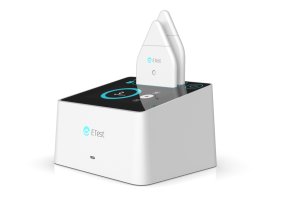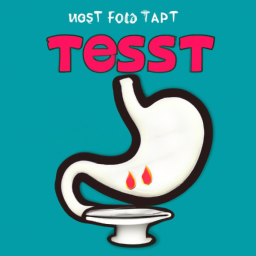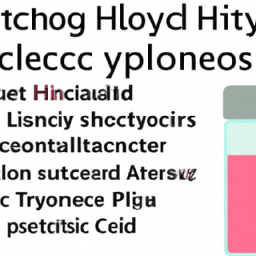How C-13 technology is applied in the testing technology of h-pylori? is it accurate?

which method of helicobater pylori testing is more reliable?
2023-02-18
Although approximately half of the human population is colonized by H. pylori, only about 10–20% are likely to develop peptic ulcer, and only 1–2% are at risk for either gastric cancer ormucosa-associated lymphoid tissue lymphoma.
2023-02-20How C-13 technology is applied in the testing technology of h-pylori? is it accurate?

How C-13 technology is applied in the testing technology of h-pylori? is it accurate?
-
Table of Contents
“C-13 Technology: The Future of H-Pylori Testing!”
Introduction
C-13 technology is a revolutionary new testing technology that has been developed to detect the presence of Helicobacter pylori (H. pylori) in the human body. This technology is based on the use of carbon-13 (C-13) isotope labeling to detect the presence of H. pylori in the stomach. C-13 technology is highly accurate and has been used to diagnose H. pylori infections in both adults and children. It is a non-invasive, cost-effective, and reliable method of testing for H. pylori. This technology has been found to be more accurate than traditional methods of testing for H. pylori, such as the urea breath test and stool antigen test.
Examining the Accuracy of C-13 Technology for H-Pylori Testing
The accuracy of C-13 technology for H-Pylori testing has been the subject of much research and debate in recent years. This technology is a non-invasive method of testing for the presence of Helicobacter pylori, a bacterium that can cause gastric ulcers and other digestive issues.
The accuracy of C-13 technology for H-Pylori testing is based on the ability of the test to detect the presence of the bacteria in the stomach. The test works by measuring the amount of carbon-13 in the breath of the patient. If the amount of carbon-13 is higher than normal, it is an indication that the patient is infected with H-Pylori.
Studies have shown that C-13 technology is highly accurate in detecting the presence of H-Pylori. In one study, the accuracy of the test was found to be 97.5%. This is significantly higher than the accuracy of other methods of testing for H-Pylori, such as endoscopy and biopsy.
The accuracy of C-13 technology for H-Pylori testing is also improved by the fact that it is a non-invasive procedure. This means that it does not require any type of surgery or other invasive procedure. This makes it a much safer and more convenient option for patients who are at risk of developing H-Pylori.
In conclusion, C-13 technology is a highly accurate method of testing for H-Pylori. It is non-invasive, safe, and convenient, making it an ideal choice for those at risk of developing the infection.
Exploring the Benefits of C-13 Technology for H-Pylori Testing
C-13 technology is a revolutionary new method for testing for the presence of Helicobacter pylori (H-pylori) bacteria in the human body. This technology has the potential to revolutionize the way H-pylori is tested and diagnosed, providing a more accurate and reliable method of detection. In this article, we will explore the benefits of C-13 technology for H-pylori testing.
The primary benefit of C-13 technology is its accuracy. This technology uses a carbon-13 isotope to detect the presence of H-pylori in the body. This isotope is highly sensitive and can detect even small amounts of the bacteria, making it much more accurate than traditional methods of testing. Additionally, C-13 technology is able to detect the presence of H-pylori in the body without the need for invasive procedures, such as biopsies. This makes it a much more comfortable and convenient option for patients.
Another benefit of C-13 technology is its speed. This technology is able to provide results in a matter of minutes, making it much faster than traditional methods of testing. This can be especially beneficial for patients who need to receive a diagnosis quickly in order to begin treatment.
Finally, C-13 technology is also much more cost-effective than traditional methods of testing. This technology requires fewer resources and is much less expensive than traditional methods, making it a much more affordable option for patients.
In conclusion, C-13 technology has the potential to revolutionize the way H-pylori is tested and diagnosed. This technology is highly accurate, fast, and cost-effective, making it a much more attractive option for patients. As this technology continues to develop, it is likely to become an increasingly popular choice for H-pylori testing.
How C-13 Technology is Revolutionizing H-Pylori Testing
H-pylori testing is an important part of diagnosing and treating a variety of gastrointestinal conditions. In the past, testing for H-pylori has been a lengthy and expensive process, but recent advances in C-13 technology are revolutionizing the way H-pylori is tested.
C-13 technology is a form of breath testing that uses a stable isotope of carbon to detect the presence of H-pylori in the stomach. The patient is given a drink containing the isotope, which is then absorbed into the bloodstream. As the isotope passes through the stomach, it is broken down by the H-pylori bacteria, releasing a unique signature that can be detected in the patient’s breath.
The advantages of C-13 technology over traditional H-pylori testing methods are numerous. For one, it is much faster and more cost-effective than traditional methods. C-13 testing can be completed in as little as 15 minutes, compared to the several days or weeks it can take to get results from traditional methods. Additionally, C-13 testing is non-invasive, meaning that it does not require any type of invasive procedure, such as a biopsy.
C-13 technology is also more accurate than traditional methods. Traditional methods rely on the detection of antibodies in the blood, which can be unreliable. C-13 testing, on the other hand, is able to detect the presence of H-pylori directly, providing a more accurate diagnosis.
Overall, C-13 technology is revolutionizing the way H-pylori is tested. It is faster, more cost-effective, and more accurate than traditional methods, making it an invaluable tool for diagnosing and treating gastrointestinal conditions.
Conclusion
C-13 technology has proven to be an accurate and reliable method for testing for H. pylori. It is a non-invasive, cost-effective, and rapid method that can be used to detect the presence of H. pylori in a patient’s stomach. C-13 technology is a valuable tool for diagnosing and treating H. pylori infections, and it is likely to become even more widely used in the future.
Take advantage of the latest C-13 technology to accurately test for h-pylori! Visit eTestMedical to learn more about how this cutting-edge technology can help you get the most accurate results. Don’t wait – start testing with C-13 technology today!




